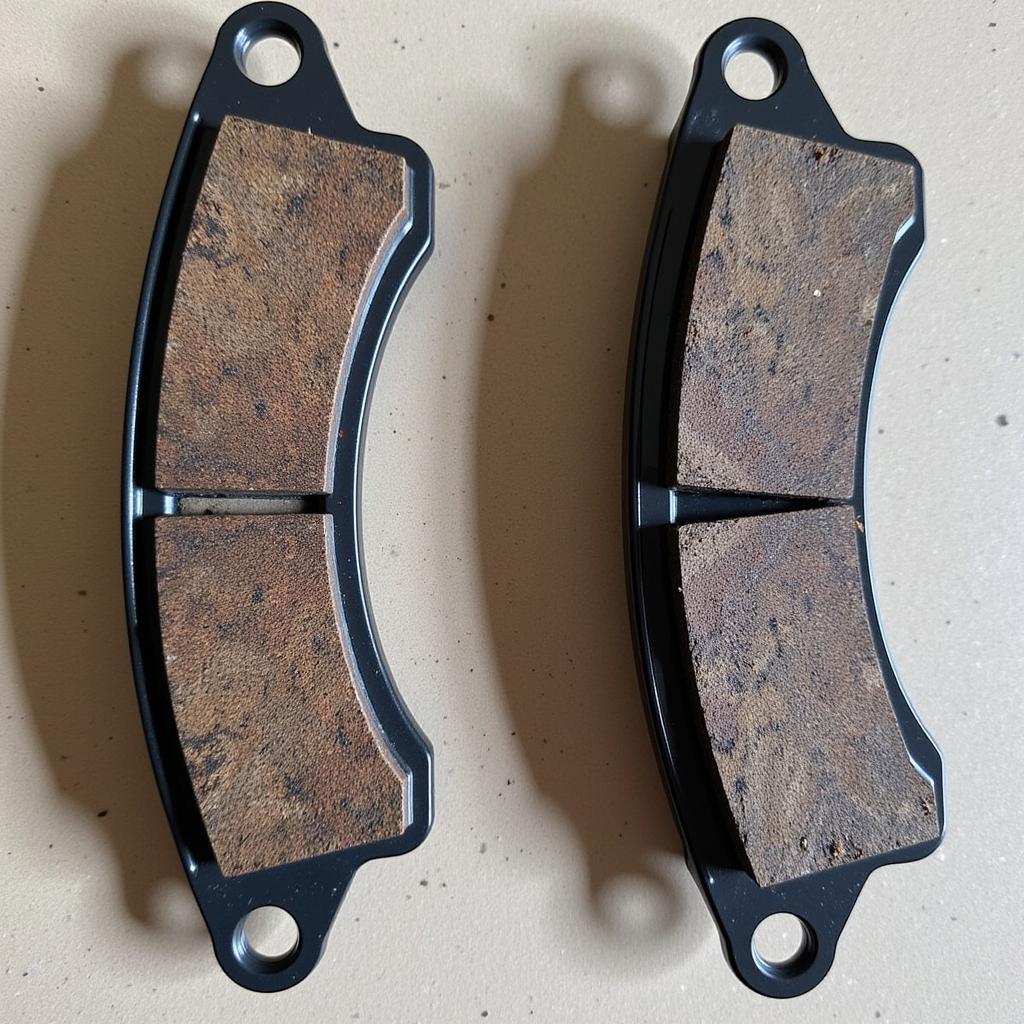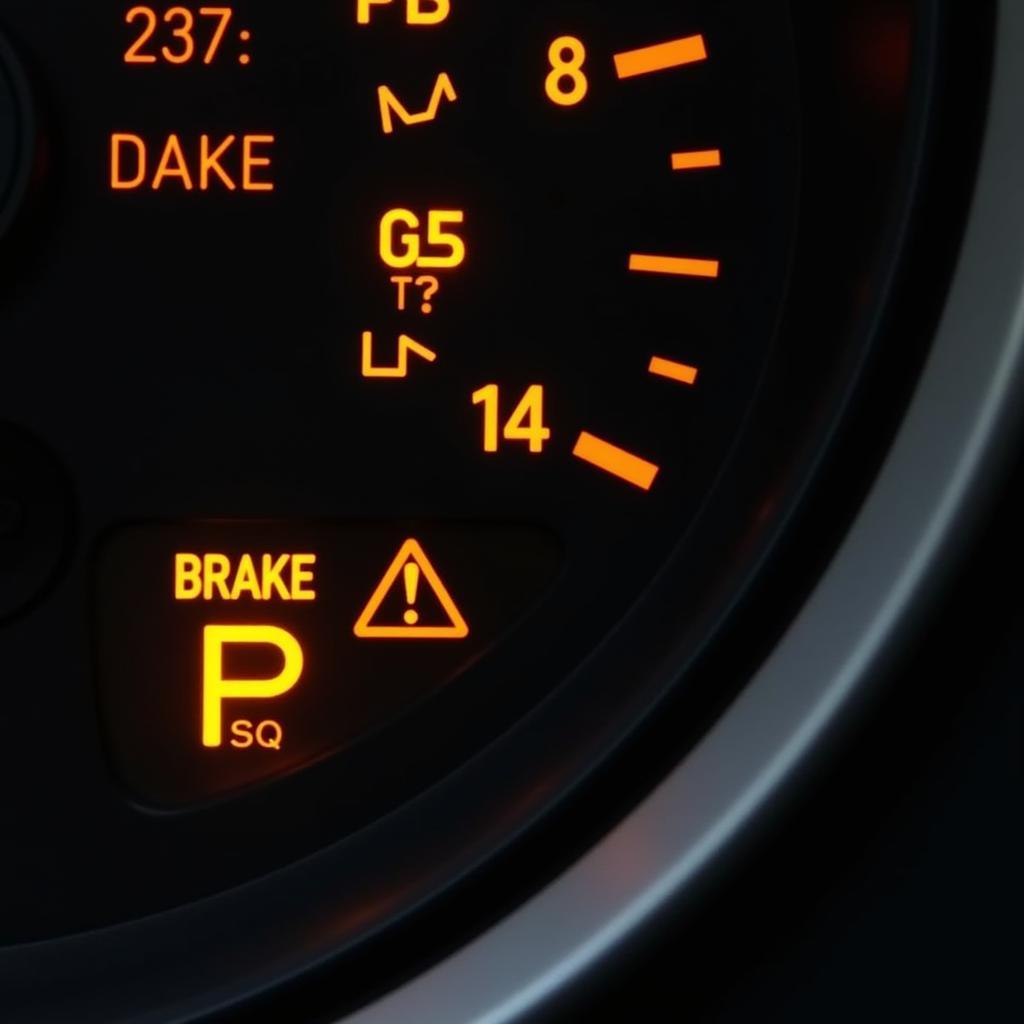Experiencing an unexpected illumination of the brake warning light in your 2005 Ford F150 can be unnerving. Is it a minor glitch or a sign of a serious problem? This comprehensive guide delves into the common culprits behind a randomly activated brake warning light in the 2005 F150, empowering you with the knowledge to diagnose and potentially rectify the issue.
Decoding the Brake Warning Light
Before diving into the specifics of the 2005 F150, it’s crucial to understand the fundamental role of the brake warning light in any vehicle.
The brake warning light serves as your vehicle’s communication system, alerting you to potential issues within the braking system. When this light illuminates, it signifies that a component within your braking system requires attention.
Common Causes of a Randomly Illuminated Brake Warning Light in a 2005 F150
Several factors can trigger the brake warning light to flicker on intermittently in your 2005 F150. Let’s explore the most prevalent culprits:
1. Low Brake Fluid Level
One of the primary reasons for a sporadic brake warning light is a low brake fluid level. Brake fluid plays a vital role in transmitting the force applied to the brake pedal to the wheels, ensuring effective braking.
What to do:
- Check the brake fluid reservoir: Locate the reservoir under the hood, typically a translucent container with a “MIN” and “MAX” marking.
- Inspect the fluid level: If the fluid level is below the “MIN” mark, it indicates a leak or worn-down brake pads.
Expert Insight:
“A low brake fluid level is often the first sign of a leak in the braking system,” says automotive engineer Emily Carter. “Ignoring this warning sign can lead to significant and costly repairs down the line.”
 2005 F150 Low Brake Fluid Reservoir
2005 F150 Low Brake Fluid Reservoir
2. Faulty Brake Light Switch
The brake light switch, positioned behind the brake pedal, is responsible for activating your brake lights when the pedal is depressed. A malfunctioning brake light switch can disrupt the brake warning light circuit.
What to do:
- Locate the brake light switch: Typically positioned above the brake pedal arm.
- Inspect for damage: Look for any signs of wear, damage, or loose connections.
- Test the switch: With the ignition on, depress and release the brake pedal while observing if the brake lights illuminate consistently.
3. Worn Brake Pads
Brake pads are designed to wear down over time. When they reach a critically low thickness, the brake pad wear sensors (if equipped) can trigger the brake warning light.
What to do:
- Inspect brake pad thickness: Visually examine the brake pads through the wheel spokes.
- Listen for noises: Screeching or grinding sounds during braking can indicate severely worn brake pads.
 Worn Brake Pads 2005 Ford F150
Worn Brake Pads 2005 Ford F150
4. ABS System Malfunction
The Anti-lock Braking System (ABS) enhances vehicle control during hard braking by preventing wheel lockup. A malfunctioning ABS system, often indicated by an illuminated ABS warning light alongside the brake warning light, can cause the brake warning light to behave erratically.
What to do:
- Check for additional warning lights: Look for other illuminated warning lights, such as the ABS light.
- Note any unusual braking behavior: Pay attention to any unusual noises or sensations while braking, such as pulsing or grinding.
Expert Insight:
“A faulty ABS module can disrupt the entire braking system, leading to inconsistent brake warning light behavior,” explains automotive diagnostics specialist, Mark Johnson. “It’s essential to have your ABS system diagnosed and repaired by a qualified technician to ensure your safety on the road.”
5. Electrical Issues
Electrical gremlins, such as loose connections, corroded wiring, or a failing battery, can also cause intermittent illumination of the brake warning light.
What to do:
- Inspect battery terminals: Ensure the battery terminals are clean, tight, and free from corrosion.
- Check for blown fuses: Consult your owner’s manual for the location of the brake light fuse and inspect for any signs of damage.
Addressing a Randomly Illuminated Brake Warning Light: What to Do
If your 2005 F150’s brake warning light flickers on randomly, taking immediate action is crucial:
- Don’t panic: Remain calm and safely pull over to a safe location.
- Check the brake fluid level: If low, add brake fluid and inspect for leaks.
- Inspect the brake lights: Ensure all brake lights are functioning correctly.
- Seek professional help: If the problem persists, it’s best to consult a qualified mechanic or automotive electrician for a thorough diagnosis.
 2005 F150 Brake System Inspection
2005 F150 Brake System Inspection
Conclusion
Addressing a randomly illuminated brake warning light in your 2005 F150 is crucial for ensuring your safety and the well-being of your vehicle. By understanding the common culprits and following the recommended actions, you can navigate this situation with confidence. Remember, prioritizing regular maintenance and timely inspections can prevent many brake-related issues from arising in the first place.

